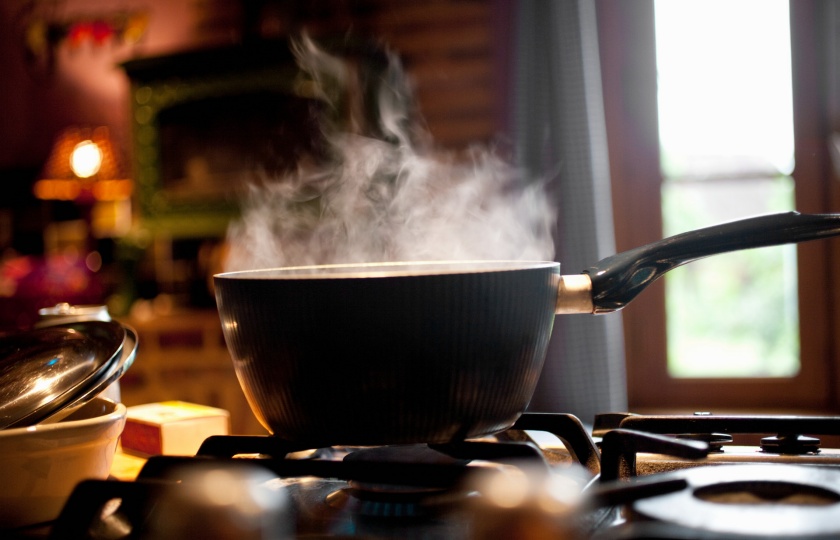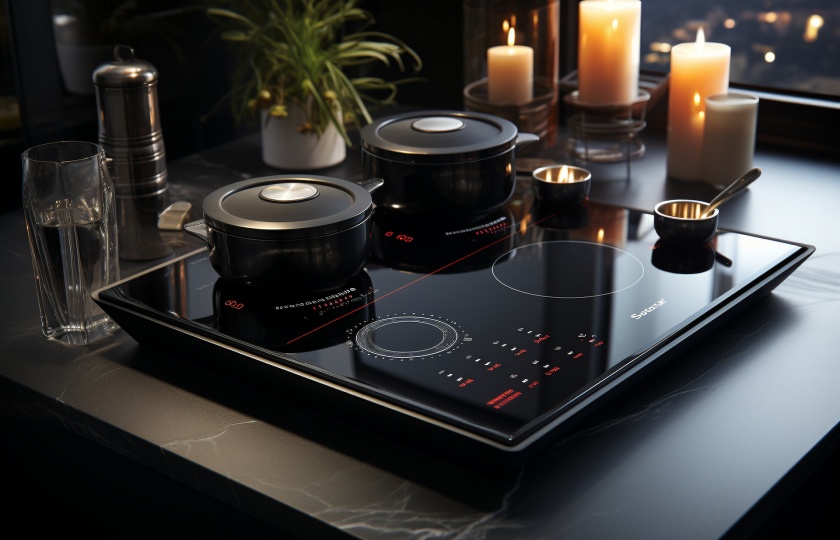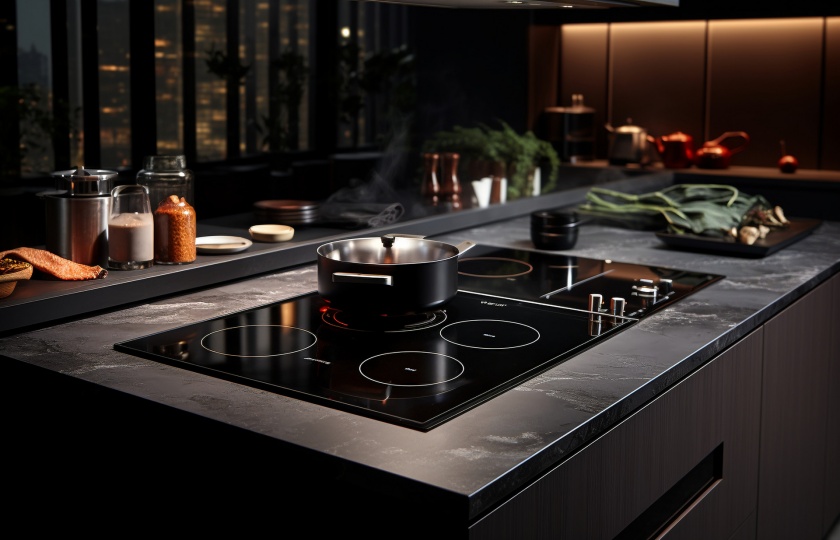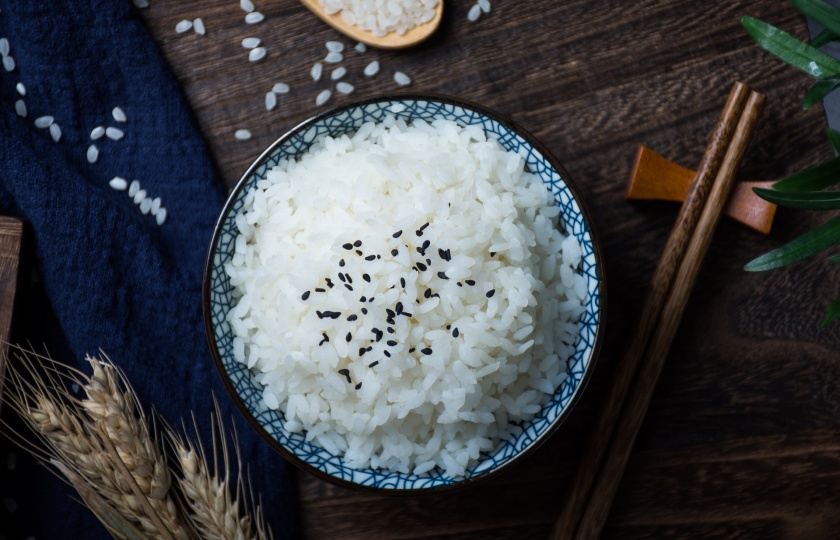Easy Cooking Tips: Can I Cook Clay Pot Rice on an Induction Cooker?

Yesterday, I had dinner at my friend's house. She made a pot of rice with a clay pot. That rice was particularly fragrant. After I came back, I wanted to make it at home. But I only have an induction cooker at home. Can I cook clay pot rice on an induction cooker? After practice, I came to the following conclusion:
You can cook clay pot rice on an induction cooker
To know if you can cook clay pot rice on an induction cooker, you need to understand the working principle of the induction cooker first. The working principle of the induction cooker is to heat cookware through electromagnetic induction. A clay pot is a kind of cookware with relatively good heat preservation performance. Like ordinary cookware, it can be heated by an induction cooker.
However, when using an induction cooker to heat a clay pot, you need to pay attention to choosing a relatively good clay pot and ensuring that the bottom of the clay pot is flat and without cracks, so that it can better contact the panel of the induction cooker and be heated evenly.
How to use a clay pot on an induction cooker?
Using a clay pot on an induction cooker is very simple. First, you need to prepare a suitable clay pot. Only a clay pot with a flat bottom can closely fit the heating surface of the induction cooker and achieve efficient heat conduction.

Secondly, before using it, you need to wash the clay pot with clear water and dry it to ensure that there is no residual moisture or stains. Then place the induction cooker on a stable tabletop, plug in the power and turn on the switch, and select an appropriate heating mode.
After that, you can place the clay pot on the heating surface of the induction cooker and let the clay pot gradually heat up. When the clay pot is heated to an appropriate temperature, you can start adding ingredients for cooking.
During the process of cooking ingredients, you can adjust the heating power and time control of the induction cooker according to the specific recipe requirements to ensure that the ingredients are evenly heated and achieve the ideal cooking effect.
During the cooking process with a clay pot, pay attention to observing the changes in the clay pot, stir or turn the ingredients in time to avoid burning or sticking to the pan. Pay attention to the heating state of the induction cooker to ensure that the clay pot or ingredients will not be damaged due to excessive heat.
After cooking is completed, do not immediately remove the clay pot from the induction cooker. First turn off the power of the induction cooker and wait for the clay pot to cool down gradually before cleaning and storing it. This can extend the service life of the clay pot and maintain its good cooking performance.
Can a clay pot be used on a gas stove?
A clay pot can be used on a gas stove, but the following points need to be noted:
For ordinary clay pots, the flame temperature of a gas stove is high and the heating may be uneven. When using it, it is recommended to slowly preheat the clay pot on a low fire to make it heated evenly as a whole for about 3 - 5 minutes.

Don't use high fire all at once when heating, otherwise the clay pot is prone to cracks due to uneven thermal stress.
After preheating, adjust the firepower according to cooking needs. For example, when making soup, first use medium-low fire to heat up the soup, and then simmer slowly. When frying things, it is also best to use medium-low fire and move the clay pot frequently to make the bottom heated evenly.
Some clay pots have special coatings or decorations. When using a gas stove, you need to read the instructions and don't damage it due to high temperature.
After using it, wait for the clay pot to cool naturally. Don't rinse it directly with cold water. A hot clay pot shrinks when it encounters cold and is easily damaged.
Can you cook rice with an induction cooker?
Sure, you can cook rice with an induction cooker.
To cook rice with an induction cooker, you only need to choose a suitable pot first. As long as it is a stainless steel pot, cast iron pot with a flat bottom and a certain thickness or a composite material pot with an induction cooker applicable mark can be used.

Then wash the rice and put it into the pot. Add water according to a ratio of about 1:1.2 to 1:1.5 of rice and water. The specific amount depends on the softness and hardness of the rice you like.
Then cover the pot, adjust the heating power of the induction cooker to a relatively large gear. After the water boils, turn to medium-low heat and continue cooking. Medium-low heat can make the rice evenly heated and cooked slowly. During this period, pay attention to uncovering the pot lid occasionally and stirring to prevent the bottom of the pot from sticking.
The cooking time for cooking rice with an induction cooker is about 15-20 minutes. The specific time needs to be fine-tuned according to the amount of rice and the heating power. Don't rush to open the pot after cooking. Let it simmer for about 5 minutes. In this way, the cooked rice will have a better taste, full grains and a fragrant smell.
What can't be cooked on an induction cooker?
The following types of items are not suitable for cooking on an induction cooker:
Aluminum products: Such as aluminum pots and aluminum plates. Since aluminum is a non-magnetic material and cannot form eddy currents on an induction cooker to generate heat, it is not suitable for cooking on an induction cooker.
Copper products: Copper is also a non-magnetic material and cannot be heated on an induction cooker, so it is also not suitable for cooking.
Tin foil and tin products: Tin foil and tin products also have no magnetism and cannot be heated on an induction cooker. Moreover, tin foil may release harmful substances in a high-temperature environment, posing a threat to human health.
Plastic products: Plastic products are prone to deformation and melting under high temperature, and even produce toxic gases, so they cannot be heated on an induction cooker.
Glass and ceramic products: Although some glass and ceramic products can withstand high temperatures, they are not magnetic and cannot be heated on an induction cooker. At the same time, some ceramic products may burst under high temperature, forming a safety hazard.
Some stainless steel products: Stainless steel contains iron elements, but not all stainless steel products are suitable for heating on an induction cooker. Some stainless steel products have a low magnetic permeability and cannot generate sufficient heat on an induction cooker.
Is the effect of cooking rice with an induction cooker better?
In daily life, there are many tools that can be used to cook rice. An induction cooker is one of them. Each kind of cookware has its own advantages. The advantages of using an induction cooker to cook rice are as follows:
High efficiency and energy saving:
The thermal efficiency of an induction cooker is higher than that of traditional gas stoves. It can cook rice more quickly and save energy. The time required to cook rice with an induction cooker is shorter than that with a gas stove.
Precise temperature control:
An induction cooker can precisely adjust the temperature, which is extremely important for cooking rice. According to the type of rice and personal taste, the heating time and temperature can be adjusted to avoid overcooking or undercooking.
High safety:
An induction cooker has no open flame and can reduce the risk of fire. If there is an overflow accidentally, the induction cooker will automatically cut off the power, and its safety is higher.
Even heating:
Modern induction cookers usually have multiple heating areas, which can heat the bottom of the pot more evenly and prevent local overheating from burning the rice.























